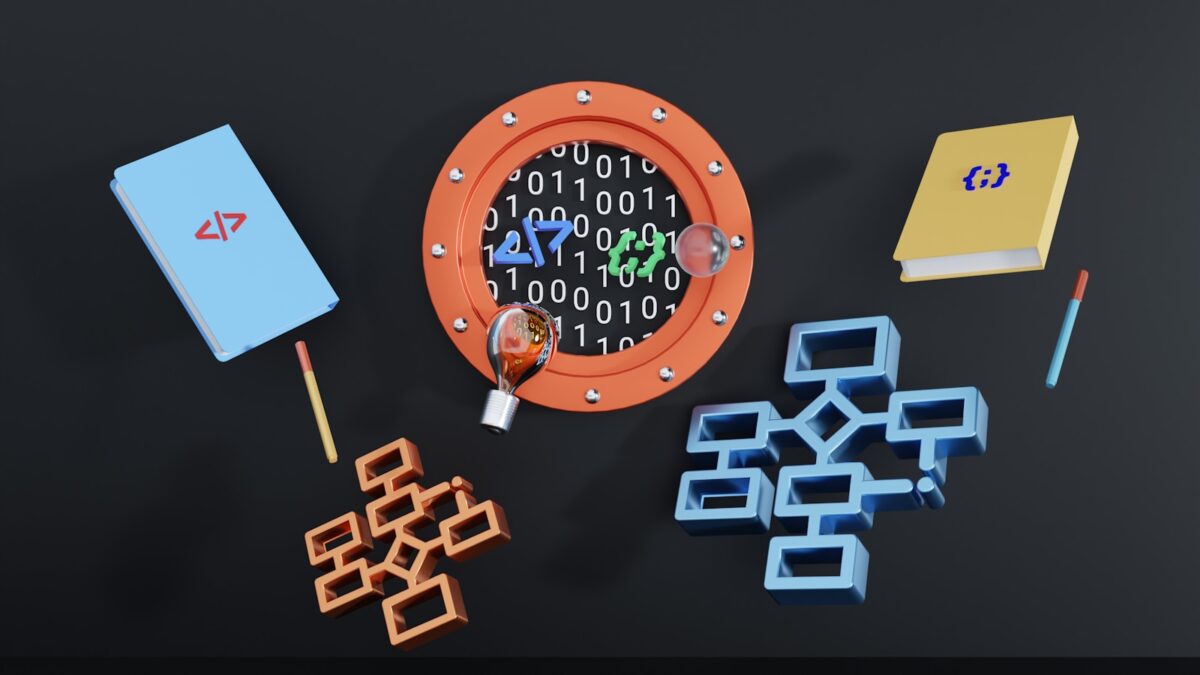
Public key cryptography

Asymmetric encryption relies on a pair of mathematically linked components: one openly distributed and another kept secret. This dual-element system enables secure information exchange without prior shared secrets, transforming how confidentiality is maintained across networks.
Exploring the mechanics behind this approach reveals how public parameters facilitate encryption, while private counterparts enable decryption. Such separation ensures that even if the openly shared element is intercepted, unauthorized access remains infeasible without the confidential piece.
Besides protecting message confidentiality, this methodology supports digital signatures, providing a reliable way to verify authenticity and integrity. By applying private elements to sign data and allowing anyone with the corresponding open component to validate it, trust is established in decentralized environments.
A thorough grasp of these principles unlocks opportunities for practical experimentation, from implementing secure messaging protocols to validating identity assertions. Engaging directly with these techniques cultivates deeper insights into their mathematical foundations and real-world applications.
Learning Resources on Asymmetric Encryption Techniques
To gain a solid understanding of asymmetric encryption, it is recommended to begin with foundational materials that explain the mathematical principles behind the generation and use of paired codes. Resources such as “Applied Cryptography” by Bruce Schneier provide in-depth coverage of algorithms like RSA and elliptic curve methods, which form the backbone of secure communication protocols. These texts detail how separate confidential and open codes interact to enable safe data exchange without requiring shared secrets beforehand.
Exploring online platforms like Coursera or edX can supplement theoretical knowledge with practical exercises on creating and verifying electronic signatures. Such signatures serve as proof of authenticity and integrity for messages or transactions within distributed ledgers. Understanding the role these signatures play in maintaining network trust highlights why asymmetric schemes are vital for blockchain implementations where identity verification must be decentralized and tamper-resistant.
Core Concepts and Implementation Challenges
The relationship between encryption and authentication is pivotal in this technology. Unlike symmetric methods relying on one secret code for both processes, asymmetric techniques use complementary codes: one held privately, another widely accessible. This separation enhances security by preventing exposure of sensitive information during signature validation or message decryption. However, it also introduces computational overheads that demand optimization strategies, especially for high-throughput blockchain networks.
Case studies from cryptocurrency projects illustrate these trade-offs effectively. Bitcoin’s adoption of the ECDSA algorithm demonstrates how elliptic curve mathematics enables shorter signatures with equivalent security levels compared to older RSA standards. Conversely, newer blockchains like Ethereum 2.0 experiment with BLS signatures to aggregate multiple attestations into compact proofs, improving scalability without sacrificing cryptographic guarantees.
For those seeking hands-on experience, repositories on GitHub contain implementations ranging from educational demonstrations to production-grade libraries used in real-world applications. Analyzing source code reveals mechanisms by which encrypted hashes represent message digests that are then signed using private components. Verification routines employ corresponding public elements ensuring alterations can be detected immediately, reinforcing transaction finality in distributed systems.
Structured courses often include step-by-step walkthroughs covering key pair generation algorithms such as Diffie-Hellman or Ed25519 curves alongside attack vectors like man-in-the-middle or replay attacks. Engaging with these tutorials cultivates an experimental mindset necessary to assess protocol robustness critically. Practitioners learn not only how to apply cryptographic tools but also how to recognize potential vulnerabilities arising from implementation errors or insufficient entropy sources affecting randomness quality.
Generating Secure Key Pairs
To generate a secure pair of asymmetric credentials, one must rely on robust mathematical foundations and proven algorithms such as RSA, ECC (Elliptic Curve Cryptography), or EdDSA. These algorithms produce two linked components: one intended for encryption or signature verification and the other for decryption or signature creation. The strength of these pairs depends heavily on random number generation quality and parameter sizes; for example, RSA keys should be at least 2048 bits to resist contemporary computational attacks.
Secure generation begins with a high-entropy source to seed cryptographic random number generators (CSPRNGs). This ensures unpredictability of the secret component, preventing adversaries from reconstructing it via brute force or side-channel attacks. Hardware security modules (HSMs) and dedicated secure enclaves can enhance this process by isolating key material during generation and storage, reducing exposure to malware or system compromise.
Technical Aspects of Asymmetric Credentials Creation
The procedure involves generating a private element that remains confidential while producing its mathematically linked counterpart for public dissemination. The private segment enables creating signatures, which prove authenticity and integrity when messages are exchanged. Conversely, the public segment allows others to verify these signatures without revealing the secret itself, thus maintaining confidentiality alongside authentication.
Implementations often include deterministic processes to avoid weak keys caused by poor entropy sources. For instance, RFC 6979 specifies deterministic signing using hash functions combined with secret data to generate unique but reproducible signatures. Such mechanisms reduce risks associated with faulty randomness during signing operations.
- Elliptic Curve Parameters: Selection of curves like secp256k1 (widely used in blockchain networks) balances speed and security through smaller parameter sizes compared to RSA while maintaining equivalent resistance against known attack vectors.
- Key Length Considerations: Longer key lengths increase computational overhead but improve resilience; choosing parameters aligned with anticipated threat models is critical.
Testing generated pairs against standard suites such as NIST’s Cryptographic Algorithm Validation Program (CAVP) validates their compliance with security requirements. Additionally, practical experiments measuring signature correctness under various input conditions deepen understanding of algorithm robustness and potential implementation flaws.
A nuanced understanding of how asymmetric systems function aids analysts in evaluating security postures across applications relying on these pairs. For example, improper handling during generation can lead to vulnerabilities exploited through side-channel analysis or fault injection attacks targeting embedded devices within blockchain nodes.
Pursuing hands-on experimentation by generating multiple sets under controlled environments reveals subtle variations affecting signature validity and encryption strength. By comparing outputs from different libraries or hardware devices, one gains insights into practical limitations beyond theoretical guarantees–an invaluable step toward mastering cryptosystem deployment for real-world scenarios.
Implementing RSA Encryption
To implement RSA encryption effectively, one must generate a pair of mathematically linked numerical values: a public and a private component. These values are derived from two large prime numbers, which form the foundation of the algorithm’s security. The process begins with selecting primes of sufficient length–commonly 2048 bits or more–to resist factorization attacks. The numerical relationship between these primes allows secure communication by enabling data to be encrypted with one component and decrypted only with its counterpart.
The asymmetric nature of RSA distinguishes it from symmetric methods by separating the encryption and decryption processes. This separation facilitates both confidentiality and authentication through mechanisms such as digital signatures. For instance, signing a transaction in blockchain technology involves using the private element to create a unique signature that others can verify using the corresponding public value, confirming authenticity without exposing sensitive data.
Step-by-Step Methodology for RSA Implementation
First, select two large prime numbers (p and q) and compute their product (n = p × q), which forms part of the encryption parameters. Next, calculate Euler’s totient function φ(n) = (p-1)(q-1). Choose an integer e such that 1 Step 1: Hash the received message using a secure hashing function (e.g., SHA-256).
This structured approach ensures that any alteration during transmission immediately invalidates the signature, preserving trustworthiness across distributed ledger technologies or secure communications frameworks frequently employed in blockchain implementations.
The continuous evolution of asymmetric schemes invites ongoing research into enhancing verification efficacy under evolving threat models. Investigations include quantum-resistant algorithms aiming to sustain security assurances when traditional encryption may become vulnerable. Meanwhile, practical applications emphasize rigorous protocol adherence combined with audit trails to verify signatures programmatically within cryptocurrency transaction validations or smart contract executions.
Conclusion: Leveraging Asymmetric Encryption in TLS for Enhanced Security
Understanding the role of asymmetric encryption within TLS reveals a layered approach to safeguarding data transmissions. The utilization of a cryptographic pair enables not only confidentiality but also authentication through digital signatures, ensuring both parties verify each other’s identities before establishing secure communication.
Analyzing the application of this mechanism highlights several technical advantages. For instance, during the TLS handshake, the exchange of a public component allows for the secure negotiation of session parameters without exposing secret information. This method mitigates risks such as man-in-the-middle attacks and unauthorized interception, thereby reinforcing trust in network interactions.
Implications and Future Directions
The integration of asymmetric systems into modern security protocols continues to evolve alongside computational advancements. Emerging algorithms designed to resist quantum-based threats must maintain compatibility with existing infrastructures relying on these cryptographic principles. Experimental research into post-quantum schemes seeks to preserve the integrity of digital signatures and encryption processes foundational to TLS.
- Efficiency improvements: Optimizing key generation and verification steps can reduce latency in secure connections, enabling faster transaction throughput in blockchain environments.
- Hybrid models: Combining classical asymmetric techniques with novel quantum-resistant constructs may provide transitional frameworks to future-proof security layers.
- Automated validation: Enhancing protocol implementations with AI-driven anomaly detection could dynamically identify weaknesses related to signature forgery or encryption flaws.
The continued exploration of these facets fosters a deeper comprehension of how asymmetric mechanisms empower encrypted sessions beyond mere secrecy–extending into trust establishment and accountability. Encouraging hands-on experimentation with certificate authorities and signature verification tools can illuminate potential vulnerabilities and inspire innovative countermeasures. Such investigative approaches pave the way for robust defenses against evolving cyber threats while maintaining seamless user experiences across distributed networks.


